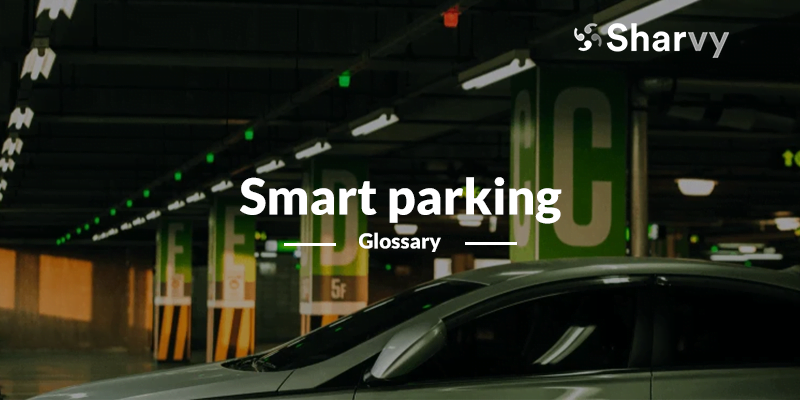What is Smart Parking? – Definition
Smart Parking is simply a way to transform the passive management of a parking lot into active, intelligent, and connection management.
To achieve this, it uses NTIC (New Information and Communication Technologies) and IoT solutions to improve the overall management of parking lots, but also the experience of users.
Therefore, Smart Parking is equipped with various technologies, such as :
- IoT sensors at each parking space (to detect the presence of a vehicle)
- Parking access control with automatic gate opening
- A license plate recognition system
- A digital solution for automatic reservation and allocation of parking spaces
- Guidance to accessible parking spaces through dynamic signage
- Etc.
Is it objective? Facilitate access to parking in urban and suburban areas while enhancing the value of parking spaces already built, optimizing their occupancy rate, and offering modularity to meet the growing demand of users (car drivers, motorcyclists, carpoolers, etc.).
What are the challenges of Smart Parking?
Today, Smart Parking represents the keystone of tomorrow’s urban mobility.
The reason is apparent! Despite the advent of emerging mobilities, the car is still the most popular means of transport for citizens. In the city and the suburbs, it is mainly used for daily commuting.
However, these mobility habits create traffic congestion, especially during rush hour, which has consequences. In addition to the anxiety and irritation generated among users, parking difficulties are also pointed out.
It is estimated that one car out of four is looking for parking in the city. And unfortunately, these parking problems lead to many nuisances related to the search for a parking space : pollution and energy overconsumption, pollution, illegal and/or double parking, illegal parking on sidewalks and crosswalks, etc.
Consequently, the challenges of Smart Parking are multiple and are mainly based on improving parking conditions in the city center. The ultimate goal is to improve traffic flow by facilitating access to parking areas (public and private).
Thus, Smart Parking must naturally be integrated into smart cities and must be able to inform users in real-time of the saturation of a parking lot, of the availability of space, of the type of spaces available (PRM, bicycles, motorcycles, with an electric terminal, etc.). At the same time, it must offer users the possibility of reserving a space via web and mobile applications, such as Sharvy.
Finally, what are the advantages of Smart Parking?
There are many advantages for users, local authorities, and companies.
On the user side, these include :
- Reducing the anxiety and daily stress of users when looking for a parking space
- A daily time saving and a (non-negligible) reduction in fuel costs
- A smoother user experience thanks to real-time information distribution
At the same time, on the community side, we can mention :
- A reduction in air pollution generated by the search for a parking space
- A reduction in the risk of traffic jams and an improved and fluid urban traffic
- As well as a limitation of abusive and illegal parking caused by the lack of space.
Finally, on the business side, we find :
- Optimization of existing assets and a limitation of parking expansion works
- Optimization of the occupancy rate and reduction of the budget allocated to the latter
- The possibility of reserving a parking space in advance of a trip
- An improvement in the well-being of employees by facilitating their arrival on site.
In this sense, it is easy to understand that Smart Parking embodies the future of parking in tomorrow’s cities (but also in companies!), both in terms of urban traffic management and the services offered to users.

